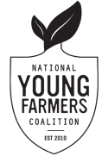Background
Farmland protection should be a priority at the state level to protect and preserve the valuable natural resources that agricultural communities and economies rely on. Farmland is currently being threatened by residential and other development projects. Once farmland transitions to another use, it rarely goes back. State level assistance is required to ensure farmland is protected and accessible for beginning, young and BIPOC farmers.
Traditional agricultural conservation easements protect land from residential and other development pressures, but require additional tools to ensure that farmland will be owned by individuals who earn their incomes from farming in the future. Working farm easements contain additional restrictions, such as Preemptive Purchase Rights or the Option to Purchase at Agricultural Value, that strengthen traditional easements. These easements not only protect land from development, but also help ensure that protected land is sold at its agricultural use value to future farmer owners. In addition, state farmland protection programs should prioritize projects that facilitate BIPOC land security. Examples of tools for this work include the Option to Purchase at Agricultural Value (OPAV), buy-protect-sell, and ground leases.
Examples
Rhode Island’s voluntary Farmland Access Program enables the state to purchase farmland threatened by development, protect it with a permanent conservation easement, and affordably sell it to young and beginning farmers looking for land.
The Vermont Housing and Conservation Board (VHCB) was established by the Vermont Housing and Conservation Trust Fund Act of 1987 and charged with not only protecting farmland and the future affordability of that land, but also recognizing the unique relationship in Vermont between farmland, forestland, housing, and historic preservation. In 2003, VHCB adopted the use of the option to purchase at agricultural value to better ensure that state-funded agricultural conservation easements are effectively keeping conserved farmland available and affordable for future generations of farmers. VHCB’s 2016 policy guide for funding conservation of agricultural land states that, “The option to purchase at agricultural value is VHCB’s standard tool to promote the goal of maintaining farmer ownership and active agricultural use of conserved farmland, and keeping conserved farmland at agricultural values.” Today, 434 Vermont farms are protected by an option to purchase at agricultural value.
Massachusetts Department of Agriculture Resources’ Agricultural Preservation Restriction Program (APR) preserves agricultural land and prevents valuable farmland soil from being built on by development companies for non-agricultural purposes. The voluntary program pays farmland owners the difference between the “fair market value” and the “agricultural value” of their farms in exchange for a permanent deed restriction which prevents any use of the property that will negatively impact its future agricultural viability. Massachusetts has required the use of option to purchase at agricultural value in all state-funded APR projects completed by the Department of Agricultural Resources since 1994; more than 600 farms have been protected under this provision since then.
In 2018, New York passed the Working Farm Protection Act, stipulating that the additional cost of a Preemptive Purchase Right restriction was eligible under the state’s Farmland Preservation Program. This change was also made administratively just prior to the bill passing.
Proposals
California Regional Economies and Equity in Agricultural Lands (REEAL) Act of 2019:
In 2019, in recognition of ongoing legacies of institutionalized racism and discrimination, the California Farmer Justice Collaborative proposed the California Regional Economics and Equity in Agricultural Lands (REEAL) Act. The bill stands as a model of a racial justice-focused farmland conservation policy for other states to consider. Building off of the Farmer Equity Act, passed in California in 2017, the REEAL Act would establish a program and funding to provide grant dollars to municipalities, conservation districts, parks, cooperatives, Native American tribes, and other non-profit organizations to protect farmland from development and to facilitate sales or long-term leases to farmers of color.
California AB-2955 Agricultural land conservation: California Farmland Conservancy Program Act, 2020: This bill revises the previous California Farmland Conservancy Act Program with the intent to remove barriers that socially disadvantaged farmers face related to land access and tenure. The bill requires that at least 25% of the program funds be provided to participants that lease or sell land to socially disadvantaged farmers and ranchers.
